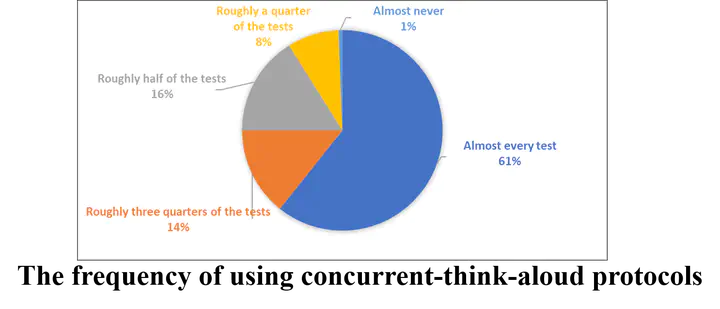
摘要
Think-aloud protocols are one of the classic methods often taught in universities for training UX designers and researchers. Although previous research reported how these protocols were used in industry, the findings were typically based on the practices of a small number of professionals in specific geographic regions or on studies conducted years ago. As UX practices continuously evolve to address new challenges emerging in industry, it is important to understand the challenges faced by current UX practitioners around the world when using think-aloud protocols. Such an understanding is beneficial for UX professionals to reflect on and learn from the UX community’s practices. It is also invaluable for academic researchers and educators to understand the challenges faced by professionals when carrying out the protocols in a wide range of practical contexts and to better explore methods to address these challenges. We conducted an international survey study with UX professionals in various sized companies around the world. We found that think-aloud protocols are widely and almost equally used in controlled lab studies and remote usability testing; concurrent protocols are more popular than retrospective protocols. Most UX practitioners probe participants during test sessions, explicitly request them to verbalize particular types of content, and do not administer practice sessions. The findings also offer insights on practices and challenges in analyzing think-aloud sessions. In sum, UX practitioners often deal with the tension between validity and efficiency in their analysis and demand better fast-paced and reliable analysis methods than merely reviewing observation notes or session recordings.